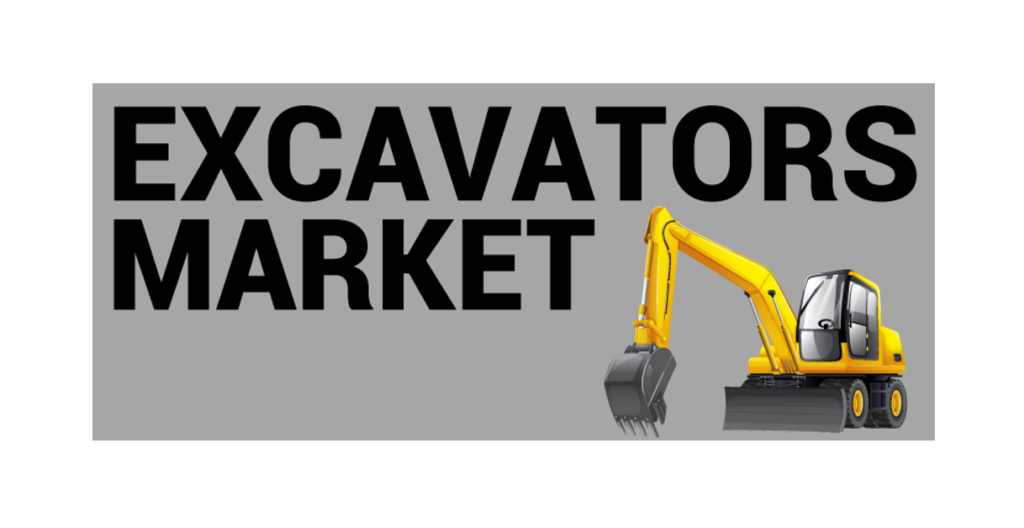Overview
Did you know that the global market for used construction equipment, including excavators, is expected to reach $89 billion by 2027, driven by technological advancements that are transforming the buying and selling process? These innovations are not only making transactions more transparent and efficient but also opening up new opportunities for both buyers and sellers.
Technology plays a significant role in the evolution of the used excavator market. From advanced diagnostic tools and telematics systems to online marketplaces and AI-driven analytics, these advancements are reshaping how used excavators are evaluated, bought, and sold. This blog will explore the impact of technology on the used excavator market, discussing the benefits, challenges, and future trends. By understanding these technological influences, stakeholders can make more informed decisions and capitalize on the opportunities presented by this dynamic market.
Market Size and Trends of the Used Excavator

The used excavator market is a robust and growing sector within the construction equipment industry. As of recent estimates, the global market for used construction equipment, including excavators, is expected to reach $89 billion by 2027. This growth is driven by several factors, including the increasing demand for cost-effective construction solutions and the rapid pace of urbanization and infrastructure development worldwide
Key trends shaping the market include:

Increasing Demand: The rising cost of new construction equipment has led many companies to seek more affordable alternatives, boosting demand for used excavators.
Technological Integration: The integration of advanced technologies such as telematics, AI, and online platforms is revolutionizing the buying and selling process, making it more efficient and transparent.
Sustainability Concerns: There is a growing emphasis on sustainability, with many companies opting for used equipment to reduce their carbon footprint and support circular economy principles.
Global Reach: The globalization of the market, facilitated by online platforms, allows buyers and sellers to connect across borders, expanding the market’s reach and accessibility.
Key Players
The used excavator market comprises a diverse range of participants, each playing a crucial role in its dynamics:
Dealers: Traditional equipment dealers remain a cornerstone of the market. They offer a wide selection of used excavators, often providing warranties and after-sales support to ensure customer satisfaction.
Auction Houses: Auction houses like Ritchie Bros. and IronPlanet are significant players, offering regular auctions that attract buyers from around the world. These auctions provide a transparent and competitive marketplace for buying and selling used excavators.
Online Platforms: Online marketplaces such as MachineryTrader, Mascus, and eBay have revolutionized the used equipment market. These platforms provide detailed listings, photos, inspection reports, and buyer reviews, making it easier for buyers to make informed decisions and for sellers to reach a global audience.
Private Sellers: Individual owners and small businesses also contribute to the market, often selling used equipment directly to buyers. While this segment is smaller, it offers unique opportunities for finding well-maintained equipment at competitive prices.
The interplay between these key players, combined with technological advancements and market trends, continues to shape the evolving landscape of the used excavator market. This dynamic environment presents both challenges and opportunities for those involved in buying and selling used construction equipment.
Technological Advancements
Inspection and Diagnostic Tools
Modern inspection and diagnostic tools have revolutionized the evaluation process for used excavators. Traditionally, assessing the condition of a used excavator required extensive manual inspection, which could be time-consuming and subjective. Today, advanced diagnostic tools provide detailed, data-driven insights into the machine’s health. For example, portable diagnostic devices can connect to an excavator’s onboard computer to read error codes, monitor engine performance, and assess hydraulic system efficiency. These tools enable more accurate evaluations, helping buyers make informed decisions and sellers justify their asking prices. Additionally, comprehensive inspection reports generated by these tools can be shared online, increasing transparency and trust in the transaction.
Online Marketplaces
Online marketplaces have dramatically expanded the reach and accessibility of used excavators. Platforms such as MachineryTrader, Mascus, and eBay provide a global stage where buyers and sellers can connect. These websites offer extensive listings with detailed descriptions, high-resolution photos, and even videos showcasing the equipment in operation. Moreover, many online marketplaces incorporate features like user reviews and ratings, inspection reports, and secure payment options, which enhance buyer confidence. By facilitating easy access to a wide range of options, online platforms help buyers find the best deals and allow sellers to reach a broader audience, ultimately increasing market efficiency.
Telematics and IoT
Telematics and Internet of Things (IoT) technologies are transforming how used excavators are tracked and maintained. Telematics systems collect real-time data on an excavator’s location, usage, fuel consumption, and maintenance needs. This data is then transmitted to a central platform where it can be monitored and analyzed. IoT sensors embedded in the machinery provide additional insights into the condition of critical components, alerting owners to potential issues before they become serious problems. For used excavators, this technology means that prospective buyers can access detailed usage histories and maintenance records, ensuring they understand the machine’s past performance and current condition. This transparency helps buyers make more informed decisions and can increase the resale value for sellers who have maintained their equipment well.
AI and Machine Learning
Artificial Intelligence (AI) and machine learning algorithms are enhancing price prediction and market analysis in the used excavator market. These technologies analyze vast amounts of data, including past sales, market trends, equipment condition, and regional demand, to predict fair market values accurately. For instance, machine learning models can identify patterns and correlations that might be missed by human analysts, providing more precise pricing guidance. Additionally, AI-driven analytics can help identify the best times to buy or sell equipment based on market trends and economic indicators. For sellers, this means setting competitive prices that maximize profit while attracting buyers. For buyers, it ensures that they are paying a fair price based on the latest market data.
These technological advancements are reshaping the used excavator market by making it more transparent, efficient, and data-driven. As these technologies continue to evolve, they will likely bring even more improvements, further benefiting both buyers and sellers in the industry.
Benefits of Technology in the Used Excavator Market

Improved Transparency
Technology has significantly increased transparency in the used excavator market, transforming the way buyers and sellers interact. Modern diagnostic tools and telematics systems provide detailed, data-driven insights into the condition and usage history of excavators. These tools generate comprehensive reports that include engine performance metrics, hydraulic system efficiency, and maintenance records. Online marketplaces further enhance transparency by offering detailed listings with high-resolution photos, videos, and inspection reports. This wealth of information helps eliminate uncertainty and builds trust between buyers and sellers, ensuring that both parties have a clear understanding of the equipment’s condition before the transaction.
Enhanced Buyer Confidence
Detailed data and diagnostics play a crucial role in boosting buyer confidence. When purchasing a used excavator, buyers are often concerned about the machine’s history and potential hidden issues. Telematics and IoT technologies provide real-time data on the excavator’s performance, usage patterns, and maintenance history. Access to this information allows buyers to make informed decisions, knowing that they are getting a reliable machine. Additionally, AI-driven price prediction models help buyers feel assured that they are paying a fair price based on the latest market trends. The availability of transparent and accurate information reduces the perceived risk, making buyers more confident in their purchase decisions.
Efficiency and Convenience
The integration of technology into the used excavator market has greatly enhanced efficiency and convenience for both buyers and sellers. Online marketplaces streamline the buying and selling process by providing a centralized platform where users can browse, compare, and purchase equipment from anywhere in the world. This eliminates the need for physical travel and allows buyers to find the best deals without geographical constraints. Remote inspections and virtual tours enable buyers to evaluate the condition of an excavator without being physically present, saving time and reducing costs associated with travel. Moreover, secure online payment systems and digital documentation further simplify transactions, making the entire process more seamless and efficient.
By leveraging these technological advancements, the used excavator market has become more transparent, reliable, and convenient, benefiting all parties involved.
Challenges and Considerations

Data Privacy and Security
As the used excavator market increasingly relies on data-driven technologies, concerns about data privacy and security become paramount. The collection and sharing of detailed information about equipment condition, usage history, and financial transactions expose both buyers and sellers to potential risks. Ensuring that this sensitive information is protected against unauthorized access, breaches, and cyber-attacks is crucial. Companies must invest in robust cybersecurity measures, including encryption, secure data storage, and regular security audits, to safeguard their data and maintain the trust of their customers. Compliance with data protection regulations, such as GDPR, is also essential to ensure that personal and sensitive information is handled appropriately.
Adoption Barriers
While advanced technologies offer numerous benefits, the cost and technical expertise required for their implementation can be significant barriers, especially for smaller dealers and individual sellers. Investing in diagnostic tools, telematics systems, and AI-driven analytics can be expensive, and the ongoing costs of maintaining and updating these technologies can add up. Additionally, the technical know-how required to operate and interpret these systems may not be readily available to all market participants. Providing training and support, as well as developing more user-friendly technologies, can help overcome these barriers and make the benefits of technological advancements more accessible to a wider range of users.
Future Trends
Emerging Technologies
Several emerging technologies hold the potential to further transform the used excavator market. Blockchain technology, for instance, offers a secure and transparent way to record and verify transactions. By creating immutable records of equipment history, ownership, and maintenance, blockchain can enhance trust and reduce the risk of fraud. Augmented Reality (AR) is another promising technology that could revolutionize the market. AR can enable virtual inspections, allowing buyers to view and interact with a digital representation of an excavator in real-time, from anywhere in the world. This can significantly enhance the evaluation process and provide a more immersive and informative experience for buyers.
Market Evolution
As technology continues to evolve, the used excavator market is poised to become more efficient, transparent, and accessible. Enhanced diagnostic tools and telematics systems will provide even more detailed and accurate data, improving the assessment and valuation of used equipment. Online platforms will continue to expand their features, offering more seamless and secure transaction processes. AI and machine learning algorithms will become more sophisticated, providing deeper insights and more accurate price predictions. These advancements will benefit both buyers and sellers by reducing uncertainty, improving decision-making, and streamlining the transaction process.
Conclusion
Technology is playing a transformative role in the used excavator market, bringing numerous benefits such as improved transparency, enhanced buyer confidence, and greater efficiency and convenience. However, challenges related to data privacy, security, and adoption barriers must be addressed to fully realize these benefits. Looking ahead, emerging technologies like blockchain and augmented reality hold the promise of further revolutionizing the market. By staying informed about these developments and leveraging technological advancements, stakeholders in the used excavator market can navigate this dynamic landscape effectively and capitalize on new opportunities.
Stay informed about the latest developments in excavator technology and the used equipment market. For more information or to explore our selection of used excavators, please contact HOLIGHT Industrial Group at sales@holightgroup.com




